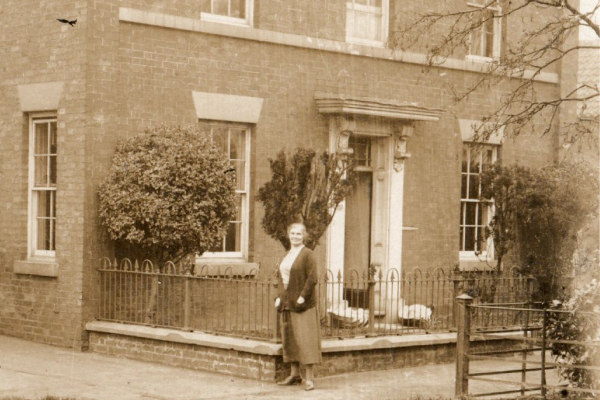Brook House was built in 1878, when the Business must have been flourishing. It is a substantial three storey building with an imposing front door with two large clam shells either side. To have two such large shells obtained from the Far East at that time must have been a sign of wealth. The house had a red wine cellar and a lower white wine cellar, which were always referred to by these names.
The estate contained the workshop and various outhouses, an enclosed ornamental garden, a large vegetable plot and a pig sty. In the kitchen there are hooks in the ceiling, where hams were hung. Hams were hanging in the 1950s and 60s.
Did the Family own property in the village? Certainly in the 1960's the imprint of “Bealby” could be seen under the then owner’s sign “Hollands”, the village shop just up the road from Brook House. One can reasonably assume that the Bealby family owned the shop at some stage.
There are also indications that the Family owned two further properties in the village, but this has yet to be authenticated.
It is conjecture but the demise of the Business likely occurred after the First World War. The forest cart was built in about 1890 in the workshop, so at that time the Business could support such an investment.
During the early 1900s, steam and petrol engine tractors began to gain prominence, consequently creating a demand for more robust iron ploughs. The Family Business did not respond to this major change, but continued to repair and manufacture the declining wooden beamed ploughs.


